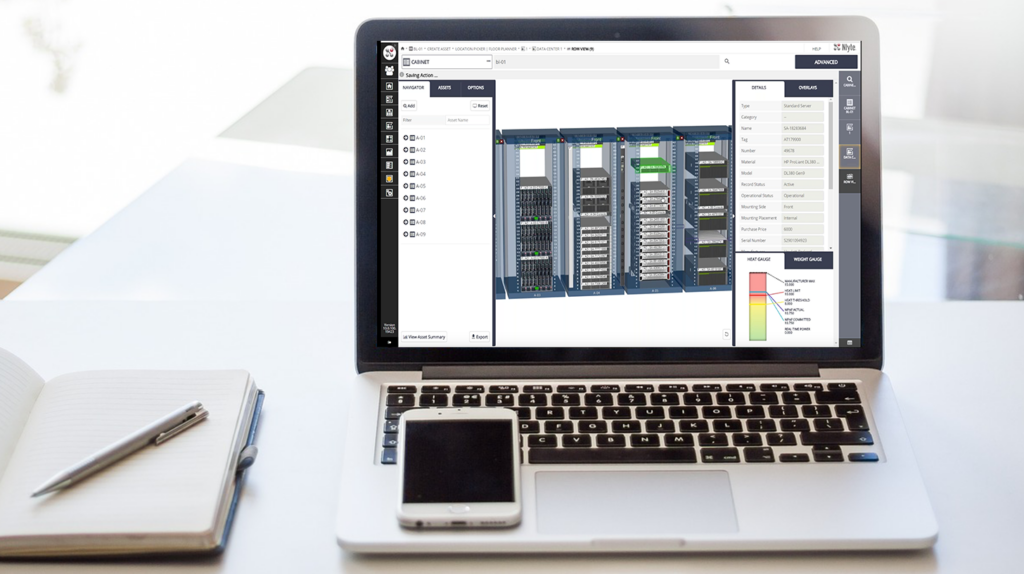Introduction
Data center colocation has become a critical component for organizations as they increasingly rely on digital infrastructure. This results in a surge of demand for colocation services. This blog explores the current state of data center colocations, the growing need for these facilities, the challenges they face, and how strategic data center management can provide effective solutions.
Current State of Data Center Colocations
As of 2024, there are approximately 10,978 data center locations worldwide. The United States leads with 5,381 data centers, followed by Germany with 521 and the United Kingdom with 514. The global data center colocation market is projected to reach $131.80 billion by 2030, up from $57.2 billion in 2022. This growth is driven by the increasing demand for digital services, cloud computing, and the need for scalable and efficient data management solutions.
Increasing Need for Colocations
Data Growth: The exponential increase in data volumes is one of the primary drivers for the growing need for data center colocations. The proliferation of IoT devices, AI applications, and digital services has led to an unprecedented surge in data generation. This data needs to be stored, processed, and managed efficiently to support business operations and decision-making. Data center colocations provide the necessary infrastructure to handle these vast amounts of data, ensuring that organizations can scale their storage and processing capabilities as needed.
Hybrid IT Environments: Organizations are increasingly adopting hybrid IT strategies, which combine on-premises, cloud, and colocation services to optimize their IT infrastructure. This approach allows businesses to leverage the benefits of each environment, such as the control and security of on-premises systems, the scalability of the cloud, and the cost efficiency of colocation. Data center colocations play a crucial role in this hybrid model by providing a flexible and scalable solution that can adapt to changing business needs.
Cost Efficiency: Building and maintaining private data centers can be prohibitively expensive, requiring significant capital expenditure and ongoing operational costs. Colocation offers a cost-effective alternative, providing access to state-of-the-art facilities without the need for large upfront investments. By opting for colocations, organizations can benefit from shared infrastructure, reduced costs, and access to advanced technologies and expertise.
Challenges Faced by Data Center Colocations
Infrastructure Complexity: Managing a diverse and interconnected IT environment while ensuring 100% uptime is a significant challenge for colocation providers. The integration of various systems and technologies must be seamless to maintain operational efficiency and reliability. Automating lifecycle management can provide real-time visibility into all data center assets, ensuring efficient resource utilization and reducing the risk of lost or underutilized equipment.
Security Risks: Data centers are prime targets for cyberattacks, making robust security measures essential. Ensuring the protection of sensitive data and maintaining compliance with regulations are critical concerns for colocation providers. Enhancing security through automated workflow management and asset reporting can help identify and mitigate potential security threats, ensuring that only authorized devices and connections are part of the network.
Environmental Impact: Data centers consume vast amounts of energy and water, contributing to environmental concerns. Efficient energy management and sustainability practices are essential to mitigate their environmental footprint. Tools for optimizing energy usage, reducing consumption, and managing cooling systems efficiently can help colocation providers reduce their operational costs and contribute to sustainability goals. Detailed sustainability reporting helps colocation providers demonstrate compliance with environmental standards and reduce their overall impact.
Scalability: As data demands grow, colocation providers must scale their infrastructure efficiently without compromising performance or service quality. Capacity planning tools can help colocation providers optimize their resources and plan for future growth. This ensures that they can scale efficiently to meet increasing data demands while maintaining high levels of service.
Addressing Colocation Challenges
Infrastructure Management:
- Lifecycle Management: Automating lifecycle management provides real-time visibility into all data center assets. This ensures that every asset is accounted for, from deployment to decommissioning, reducing the risk of lost or underutilized equipment. By having a comprehensive view of their assets, colocation providers can make informed decisions about resource allocation and maintenance, ultimately improving operational efficiency and reducing costs.
- Workflow Automation: Manual processes in data center management are prone to human error and can be time-consuming. Automated workflows streamline processes and reduce the likelihood of errors. These automated workflows ensure consistent and efficient operations by standardizing procedures and eliminating the need for repetitive manual tasks. As a result, colocation providers can focus on strategic initiatives rather than getting bogged down by routine operations.
Data Management:
- Effective Data Segmentation: Handling vast amounts of data is a significant challenge for colocation providers. Effective data segmentation reduces redundancy and improves data management. By organizing data efficiently, colocation providers can ensure that critical information is easily accessible and that storage resources are used optimally. This not only reduces storage costs but also enhances the speed and accuracy of data retrieval, supporting better decision-making and operational efficiency.
- Real-Time Monitoring: Continuous monitoring of data center performance is essential for maintaining optimal operations. Real-time monitoring capabilities allow colocation providers to quickly identify and resolve issues. This proactive approach helps prevent potential disruptions and ensures that the data center operates at peak performance. Real-time monitoring also provides valuable insights into trends and patterns, enabling colocation providers to anticipate and address future challenges.
Security and Risk Mitigation:
- Automated Workflow Management: Security is a top priority for colocation providers, which are often targeted by cyberattacks. Automated workflow management reduces the risk of human error and ensures that security protocols are consistently followed. Additionally, automated workflows can alert security teams to potential threats, allowing for swift action to mitigate risks.
- Asset Delta Reporting: Unapproved network connections pose significant security risks. Asset delta reporting provides insights into any changes or discrepancies in the network. This feature helps identify unapproved connections and unauthorized devices, enhancing the overall security of the data center. By maintaining a secure network, colocation providers can protect sensitive data and maintain customer trust.
Environmental Sustainability:
- Energy Optimization: Optimizing energy usage, reducing consumption, and managing cooling systems efficiently can minimize environmental impact. By implementing these energy optimization strategies, colocation providers can reduce their operational costs and contribute to sustainability goals.
- Sustainability Reporting: Detailed reporting on energy usage and environmental metrics helps colocation providers demonstrate compliance with sustainability standards. This transparency not only supports regulatory compliance but also enhances the provider’s reputation as an environmentally responsible organization.
Scalability:
- Capacity Planning: Capacity planning tools help colocation providers optimize their resources and plan for future growth. This ensures that they can scale efficiently to meet increasing data demands while maintaining high levels of service. By leveraging these tools, colocation providers can support long-term planning and investment, providing a solid foundation for future expansion.

Conclusion
Data center colocations provide scalable and cost-effective solutions for managing vast amounts of data. However, they face significant challenges related to infrastructure complexity, security, environmental impact, and scalability. Addressing these challenges with robust data center management solutions enables colocation providers to optimize their operations, enhance security, and support sustainable growth.
Nlyte’s DCIM solutions offer significant benefits for data center colocations by providing real-time monitoring, efficient asset management, and enhanced security measures. These tools help colocation providers discover and utilize stranded capacity, optimize energy usage, and ensure compliance with service level agreements (SLAs). By leveraging Nlyte’s solutions, colocation providers can achieve greater operational efficiency, reduce costs, and deliver reliable, transparent services to their tenants
By implementing these strategies, data center colocation operators can achieve unprecedented control over their infrastructure, ensuring efficient and reliable service delivery.
This article was posted on behalf of the author, Lindsay Hanna, Senior Marketing Manager at Nlyte Software.
Connect with Lindsay on LinkedIn




